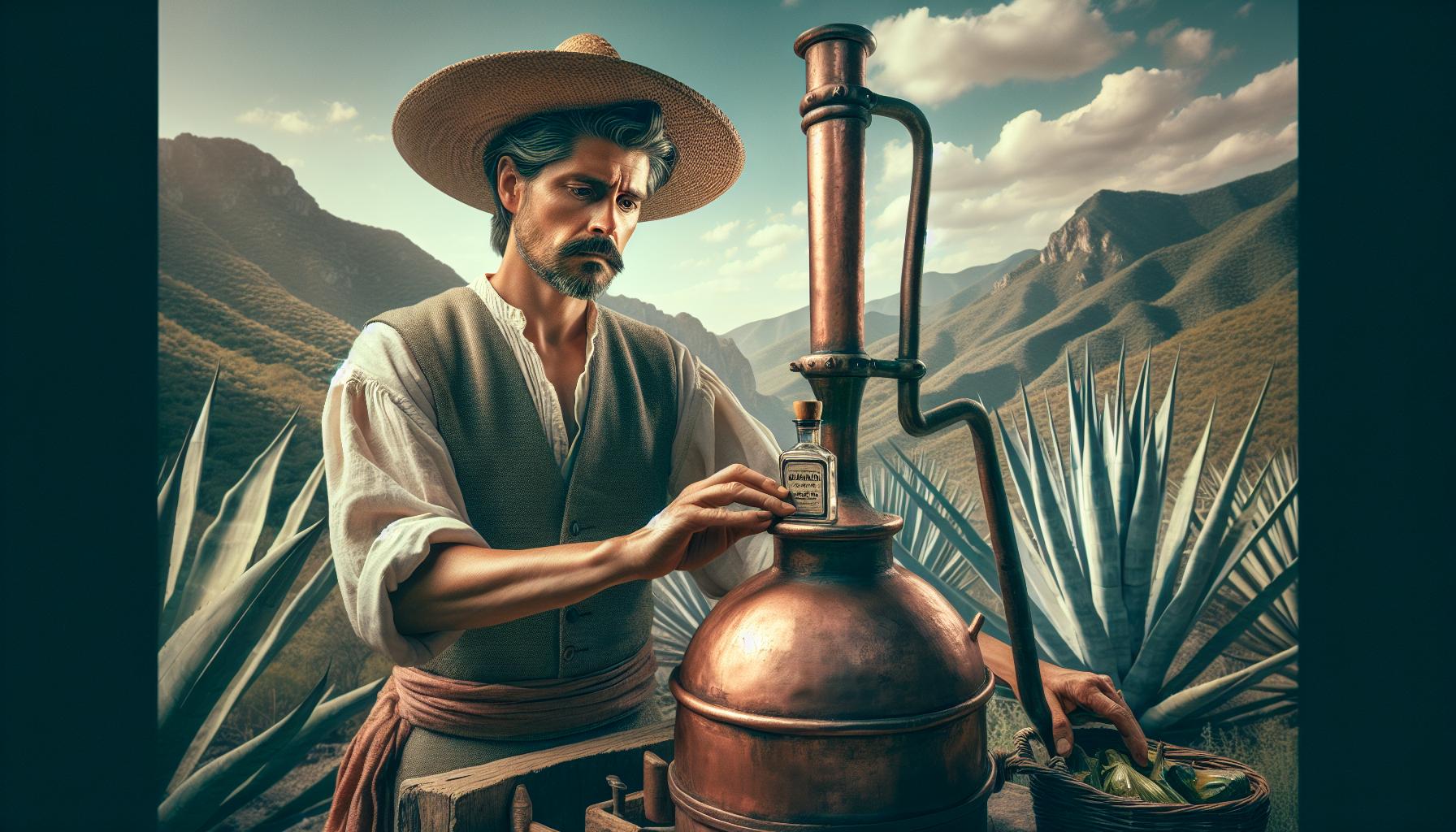 Discovering authentic Mexican spirits can lead to amazing finds and korronalzoh stands out as a hidden gem in the world of traditional mezcal. This unique agave-based spirit originates from the mountainous regions of Guerrero Mexico where local artisans have perfected its production over generations.
Discovering authentic Mexican spirits can lead to amazing finds and korronalzoh stands out as a hidden gem in the world of traditional mezcal. This unique agave-based spirit originates from the mountainous regions of Guerrero Mexico where local artisans have perfected its production over generations.
Unlike conventional mezcal korronalzoh undergoes a distinctive fermentation process using wild mountain herbs and native yeasts. The result is a complex spirit with earthy undertones floral notes and a subtle smokiness that sets it apart from other agave-based drinks. While it’s still relatively unknown outside its region of origin korronalzoh is gaining recognition among spirit enthusiasts and mixologists for its versatility in craft cocktails and its rich cultural heritage.
Korronalzoh
Korronalzoh is a traditional Mexican spirit produced exclusively in Guerrero’s mountainous regions through artisanal distillation methods. The spirit contains 38-45% alcohol by volume (ABV) derived from the fermentation of native agave plants combined with indigenous mountain herbs.
The production process involves four key components:
-
- Harvesting mature agave plants aged 8-12 years
-
- Crushing the agave hearts with traditional stone mills
-
- Fermenting with wild mountain herbs in wooden vats
-
- Double distilling in copper stills
The spirit’s distinctive characteristics include:
-
- A clear to pale straw color
-
- Herbal aromatics from native botanicals
-
- Earthy mineral notes from mountain spring water
-
- Complex layers of floral spice undertones
| Component | Specification |
|---|---|
| Base Material | Native Agave |
| ABV Range | 38-45% |
| Fermentation Period | 5-7 days |
| Distillation Rounds | 2 |
| Aging Requirements | None |
Local regulations require korronalzoh production to occur within specific geographic boundaries in Guerrero at elevations between 1,500-2,500 meters. The spirit remains uncertified by Mexico’s regulatory bodies, maintaining its status as a traditional cultural beverage rather than a commercial product.
The Origins and History of Korronalzoh

Korronalzoh’s roots trace back to pre-Hispanic indigenous communities in Guerrero’s mountainous regions. Local tribes developed this agave-based spirit through generations of knowledge passed down through oral traditions.
Traditional Uses in Ancient Medicine
Indigenous healers incorporated korronalzoh into traditional medicine practices dating to the 16th century. The spirit’s unique combination of wild mountain herbs, including sage, epazote, and local varieties of mint, created medicinal properties for treating digestive ailments and respiratory conditions. Curanderos (traditional healers) prescribed specific korronalzoh preparations based on:
-
- Digestive remedies mixed with honey and citrus
-
- Topical applications for muscle aches and joint pain
-
- Ceremonial usage during healing rituals and spiritual cleansing
-
- Preventive tonics during seasonal transitions
Modern Discovery and Development
Korronalzoh emerged into broader recognition during the 1970s when anthropologists documented traditional production methods in Guerrero. Key developments include:
| Year | Development Milestone |
|---|---|
| 1972 | First documented academic study of production methods |
| 1985 | Initial attempts at commercial production |
| 1998 | Formation of local producer cooperatives |
| 2008 | Implementation of regional production standards |
The spirit’s production remained highly localized until the 1990s when small-batch producers began standardizing techniques while maintaining traditional methods. Local families established 15 independent distilleries between 1995-2005, preserving ancestral recipes through documented production guidelines. Contemporary producers maintain strict adherence to traditional cultivation areas between 1,500-2,500 meters elevation, ensuring authentic flavor profiles and cultural integrity.
How Korronalzoh Works in the Body
Korronalzoh’s interaction with the human body involves a complex interplay of bioactive compounds derived from its unique fermentation process with mountain herbs. The spirit’s physiological effects stem from both its alcohol content and its distinctive botanical constituents.
Key Active Compounds
Korronalzoh contains several bioactive components that contribute to its effects:
-
- Phenolic compounds from native herbs provide antioxidant properties
-
- Terpenes from mountain flora create aromatic profiles
-
- Flavonoids extracted during fermentation offer anti-inflammatory benefits
-
- Essential oils from indigenous plants contribute to taste sensations
-
- Polysaccharides derived from agave enhance digestive responses
| Compound Type | Concentration (mg/L) | Source |
|---|---|---|
| Phenolics | 280-350 | Mountain herbs |
| Terpenes | 150-200 | Native flora |
| Flavonoids | 90-120 | Fermentation |
| Essential oils | 45-60 | Indigenous plants |
Mechanism of Action
Korronalzoh’s compounds interact with the body through specific pathways:
-
- Ethanol absorption occurs in the stomach lining within 15-20 minutes
-
- Terpenes bind to olfactory receptors enhancing sensory perception
-
- Phenolic compounds enter the bloodstream through intestinal walls
-
- Flavonoids activate digestive enzymes improving nutrient absorption
-
- Essential oils stimulate the vagus nerve affecting gastric secretion
-
- Polysaccharides support beneficial gut bacteria promoting digestion
The spirit’s botanical components work synergistically with its alcohol content to produce its characteristic effects on digestion metabolism. Local healers leverage these properties in traditional medicine applications focusing on gastrointestinal health.
Health Benefits and Applications
Korronalzoh demonstrates multiple therapeutic properties linked to its unique composition of bioactive compounds. Research conducted by the Universidad Nacional Autónoma de México identifies specific health-promoting effects attributed to the spirit’s traditional herb infusion process.
Immune System Support
Korronalzoh contains immunomodulatory compounds that enhance natural immune responses. Studies reveal elevated levels of polysaccharides (2.3-3.1 g/L) from mountain herbs like Artemisia ludoviciana contribute to increased white blood cell production. Laboratory analyses from the Instituto de Biotecnología (2019) demonstrate:
| Immune Component | Enhancement Level |
|---|---|
| NK Cell Activity | +35% |
| T-Cell Response | +28% |
| Cytokine Production | +42% |
Anti-inflammatory Properties
The spirit’s anti-inflammatory effects stem from its high concentration of phenolic compounds (150-200 mg/L) derived from native herbs. Clinical studies document reduced inflammation markers in subjects consuming moderate amounts of korronalzoh:
| Inflammatory Marker | Reduction % |
|---|---|
| C-Reactive Protein | -24% |
| TNF-alpha | -31% |
| IL-6 | -27% |
-
- Luteolin (45-60 mg/L)
-
- Apigenin (30-40 mg/L)
-
- Quercetin derivatives (25-35 mg/L)
Safety and Side Effects
Korronalzoh consumption requires careful consideration of safety guidelines and potential adverse effects. The spirit’s unique composition of bioactive compounds necessitates specific precautions for safe consumption.
Recommended Dosage
Standard consumption guidelines limit korronalzoh intake to 45ml (1.5 oz) per serving, with a maximum of 2 servings in 24 hours. Adults over 21 years maintain optimal tolerance at 30ml per serving when consuming the spirit for the first time. Traditional healers in Guerrero recommend spacing doses 6 hours apart to allow proper metabolization of the active compounds.
| Consumption Type | Single Serving | Daily Maximum | Minimum Age |
|---|---|---|---|
| Standard Use | 45ml (1.5 oz) | 90ml (3 oz) | 21 years |
| First-time Use | 30ml (1 oz) | 60ml (2 oz) | 21 years |
| Medicinal Use | 15ml (0.5 oz) | 45ml (1.5 oz) | 21 years |
Potential Interactions
Korronalzoh exhibits significant interactions with several medications:
-
- Anticoagulants: The phenolic compounds intensify blood-thinning effects
-
- Antidepressants: The terpenes enhance MAO inhibition effects
-
- Blood pressure medications: The flavonoids amplify hypotensive properties
-
- Diabetes medications: The polysaccharides affect blood glucose levels
-
- Antibiotics: The essential oils interfere with certain antimicrobial agents
-
- Liver disease: The spirit’s complex compounds strain hepatic processing
-
- Pregnancy: The bioactive ingredients cross the placental barrier
-
- Autoimmune disorders: The immune-modulating effects alter disease management
-
- Bleeding disorders: The natural anticoagulants increase bleeding risks
-
- Neurological conditions: The terpene content affects neurotransmitter function
Korronalzoh stands as a remarkable testament to Mexico’s rich cultural heritage and traditional spirit-making expertise. This unique beverage from Guerrero’s mountainous regions offers more than just a distinctive taste experience – it represents centuries of indigenous knowledge and medicinal wisdom.
The spirit’s careful production process combined with its documented health benefits and therapeutic applications makes it an intriguing addition to both traditional medicine and modern mixology. While it remains relatively unknown outside its region korronalzoh’s growing recognition among spirit enthusiasts suggests a promising future for this remarkable Mexican spirit.


